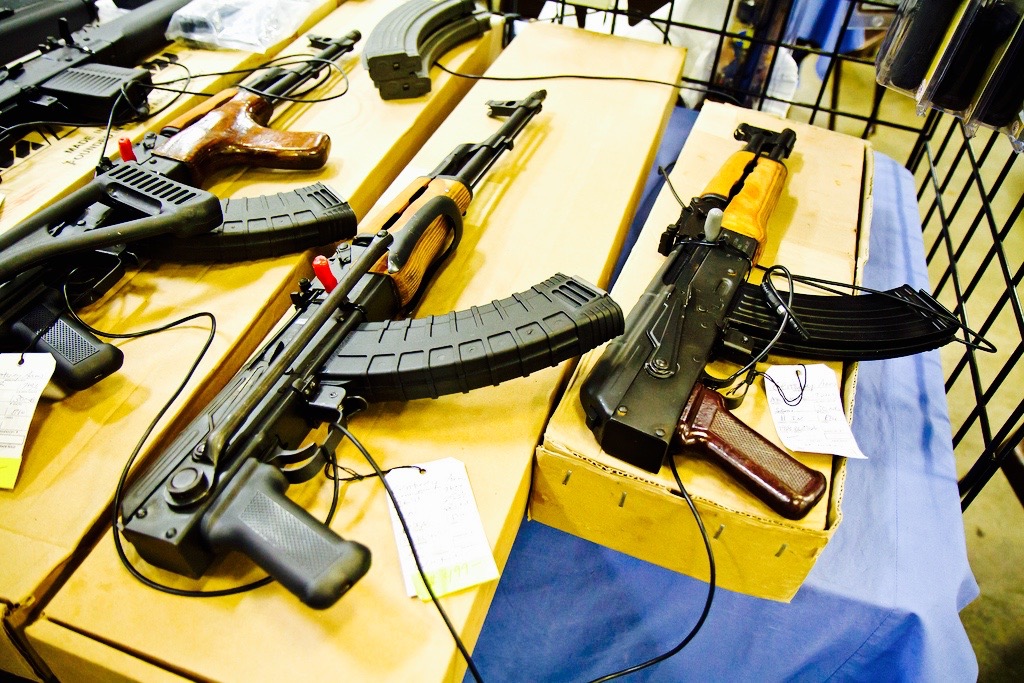Congress is in the grueling final stages of pushing through the 2016 National Defense Authorization Act, which funds the Pentagon and introduces new rules to how the military runs its operations. The Senate voted on Wednesday to send the bill to the White House, despite a veto threat from the president over funding. While that conflict has garnered most of the headlines in recent days, the text of the conference bill, which emerged last week, reveals some significant compromises on personal guns on military bases and selling surplus weapons to civilians. The two key provisions:
Republicans back down on arming service members
After a gunman killed four Marines and a Navy sailor on a reserve base in Chattanooga, Tennessee, in July, Republican politicians and conservative pundits fumed at Department of Defense rules barring service members from carrying guns while on duty at military facilities. “If these Marines yesterday, the four of them, had guns they probably, at least some of them, would be with us today,” said Republican presidential candidate Donald Trump. The attack sent lawmakers scrambling to introduce legislation to greatly increase access to guns on bases, including a proposal by two Tennessee congressman that would have allowed all service members with concealed carry permits to be armed when on base.
In the defense bill, however, the Republican-led Congress is leaving control over how guns are handled on bases and other installations under the purview of military leadership. Here’s the relevant section (emphasis added) of the bill’s language:
“…the Secretary of Defense, taking into consideration the views of senior leadership of military installations in the United States, shall establish and implement a process by which the commanders of military installations in the United States, or other military commanders designated by the Secretary of Defense for military reserve centers, Armed Services recruiting centers, and such other defense facilities as the Secretary may prescribe, may authorize a member of the Armed Forces who is assigned to duty at the installation, center or facility to carry an appropriate firearm on the installation, center, or facility if the commander determines that carrying such a firearm is necessary as a personal or force-protection measure…”
That’s a fairly high standard, and essentially the same as current Department of Defense policy, albeit administered at the base level as opposed to by the Pentagon. Currently, internal Pentagon policy is governed by Defense Directive 5210.56, which includes the politically problematic line that “arming DoD personnel with firearms shall be limited and controlled,” with firearms only given to those who require them for their mission.
A piece of military history for the masses — pending a background check
The other part of the bill relevant to the roiling gun debate makes a trove of antique military M1911 handguns available to civilian gun owners. The guns would be handed over to the Civilian Marksmanship Program (CMP), a nonprofit corporation that distributes surplus military guns to members of affiliated clubs. The release of the handguns would be a victory for the many gun enthusiasts and legislators who have grumbled as thousands of decommissioned weapons sit in warehouses across the globe. But the bill’s language also strengthens oversight of the CMP by requiring the program to obtain a federal firearms license, which requires an in-person background check with every transfer.
Currently, the CMP performs background checks on most transfers, but there are a few important exceptions: some current service members or individuals with a security clearance can get a gun with just a notarized letter attesting to their status. Those same buyers can be prohibited from buying firearms through a regular licensed dealer — security clearances, for example, can be given to people with convictions, who would not pass a background check. Even more troubling is a 1999 Government Accountability Office study which estimated that between 1997 and 1998 the CMP transferred up to 2,200 rifles without following its own screening procedures. In some cases, the CMP only performed a background check or screening on someone before their first purchase from the program, but not for subsequent purchases. In that time period, some buyers had become prohibited buyers.
If the bill does pass, only 10,000 of the new-but-old handguns will be released in a one-year pilot program. An earlier proposal raised concerns with the Army and Department of Justice since it could have meant a sudden influx of 100,000 guns into the private market through a program with a less-than-stellar reputation for oversight.
[Photo: Flickr user David B. Gleason]

